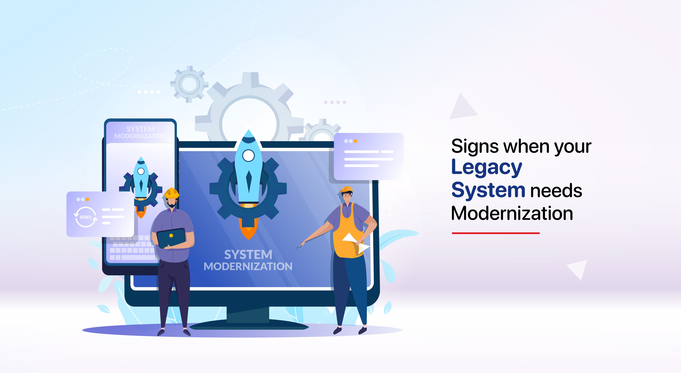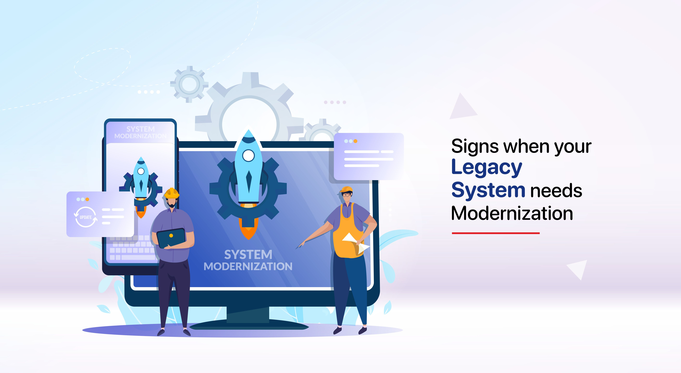Costs of Maintaining Legacy Systems and How To Avoid them



Legacy systems can be a financial burden for businesses, but what exactly contributes to the costs? And how can you measure these costs to justify modernizing the software?
Businesses across various industries, including startups, non-profits, and government agencies, struggle with costly legacy applications that are not up to par with current standards.
So why do businesses continue to bear the expenses of maintaining these systems for longer than necessary? For older, profitable software companies, executives may prefer to stick with their current customers and software instead of pursuing new opportunities. In the case of larger enterprises or government organizations, a failed legacy system update can deter executives from trying again, leading to ongoing maintenance costs. Alternatively, leaders may be unaware of the actual cost of maintaining their legacy system.
Regardless, it's important to evaluate the true cost of maintaining a legacy system. Understanding the financial impact of legacy software can provide valuable insight when considering the cost of modernization projects.
The primary areas of expense when it comes to maintaining legacy systems can be categorized as follows:
Maintenance expenses
Merely maintaining software and its current feature set can be a costly affair. Expenses under this category include the costs of infrastructure like cloud providers and DevOps platforms, as well as expenses incurred on development, maintenance, and quality assurance of the current set of features. This also includes the expenses of product development staff, agencies, and freelancers.
Security Expenditure
Security-related expenses are distinct from maintenance expenses and can incur additional costs. This category includes all the costs related to security, including proactive measures like cybersecurity staff and services, as well as retroactive measures like data recovery. As the number of users increases, the cost of security is also likely to increase.
New Feature Development Costs
Updating an outdated application is usually more expensive than updating a modern one. Longer development times lead to higher staff and contractor hours, which can result in a 2-5X increase in development costs for new features.
Expenses under this category are usually measured in terms of hourly or monthly rates paid to staff or contractors for developing new features. However, there may be fixed costs associated with adding new features to a legacy system, such as high cloud fees resulting from lengthy code.
Costs of Downtime
Outdated technology in legacy applications often leads to frequent downtime. In addition, an outdated architecture or programming language can result in more outages if your development team lacks the necessary skills to maintain the system.
Cost components:
This category includes expenses incurred in monitoring uptime, downtime notifications, and staff or contractor hours required to restore the system. However, downtime also incurs other costs, such as missed opportunities from potential new customers, increased churn rate, and more customer support tickets.
Costs of Customer Support
If your dev team struggles to maintain and update a legacy system, chances are it's a nightmare for your users too.
Cost components:
A bad user experience leads to increased customer support costs. When there are numerous errors and the user interface is so confusing that customers can't navigate the system on their own, more customer support tickets are generated. In addition, your dev team will need to fix the bugs identified by users, resulting in extra costs.
Costs of Lost Revenue
While the next category looks at new opportunity costs, this one focuses on the existing business you are losing due to your legacy system.
Cost components:
For software companies, calculate the churn rate, average lifetime value, and average length of the customer relationship when customers churn. For internal-use systems, calculate the number of staff hours lost due to inefficiencies in the system.
Opportunity Costs
Finally, we have the most challenging category to quantify: the costs of missed opportunities.
Cost components:
For software companies, research the total addressable market and the share of the market your company could capture if it had a modern system and better user experience. For internal-use systems, opportunity costs are what your dev team could achieve if they were not required to maintain the legacy system. What projects or initiatives could they work on?
Based on our experience working with startups, enterprises, and agencies, legacy technology can cost 30-35% more annually than modern software. However, after a successful modernization project, the cost may decrease, especially if the system is for internal use, has a straightforward use case, or doesn't require an extensive feature set..
On the other hand, software companies may end up spending more on software development after modernization because they now have the technical ability to create the new features their target audience requires.
In any case, it is reasonable to expect a minimum of 25% savings on infrastructure and maintenance expenses.
With our platform, LensHub, CXOs get meaningful insights about their legacy systems which helps them strategize the entire modernization approach with better visibility and minimum risk. LensHub also help to cut down the modernization time and cost by almost 40%.
Tag:Legacy- Modernization